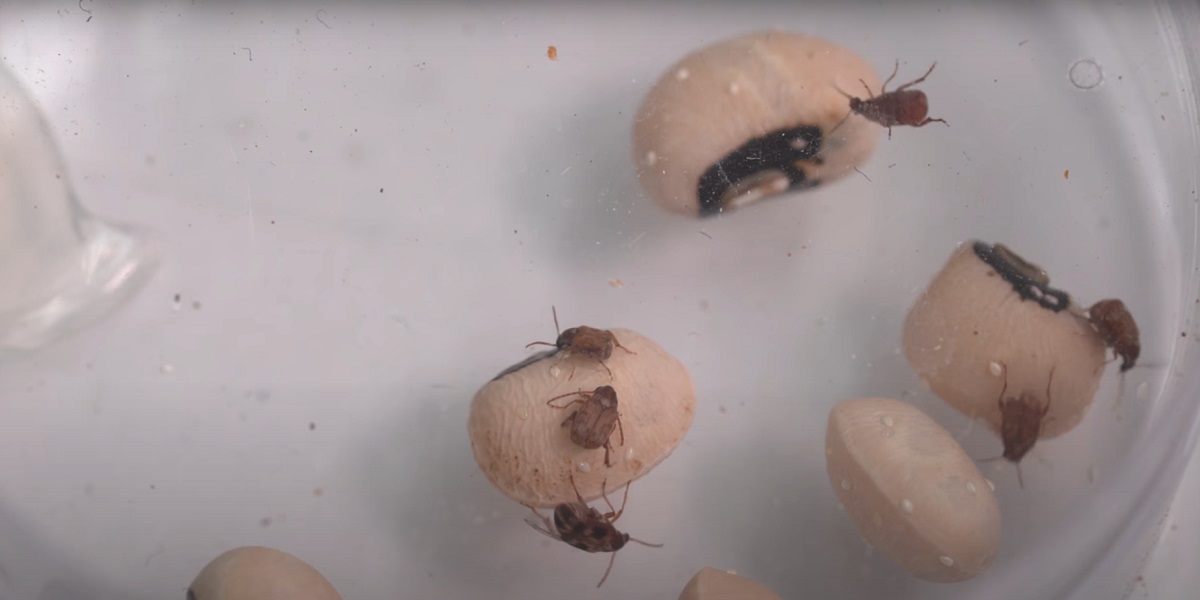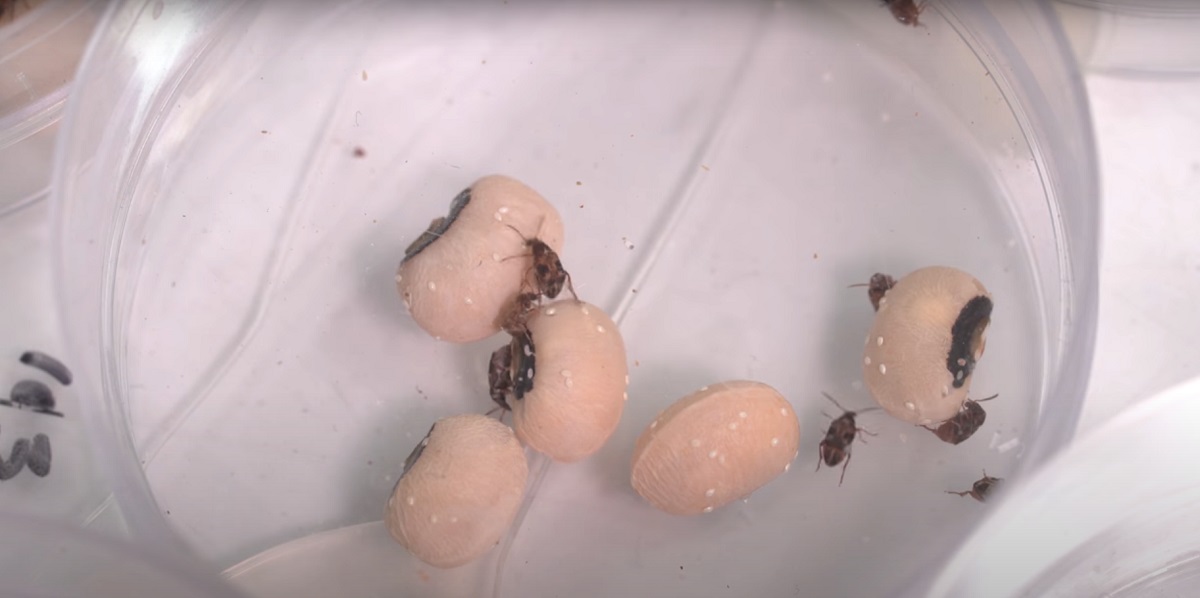What are the effects of bean beetles?
introduction
This insect attacks all species of the genus Phaseolus but prefers field bean beetles and its various cultivars. Some varieties are heavily attacked by this pest.
This insect attacks all species of the genus Phaseolus but prefers field beans and its various cultivars. Some varieties are heavily attacked by this pest, while others are resistant.
The amount of protein material and other main components of the seed (lipid material and water content) is effective.

What are the effects of bean beetles?
This pest prefers bean varieties and varieties that have more ingredients. Pass through the stages of larvae and maturity.
When the female insect lays eggs on bean seeds, most of the larvae die and only a few of them reach the end of the larval period.
Morphology bean beetles
This insect is found in many parts of the world, including the Americas, Hawaii, Europe, around the Mediterranean, Africa, India, Malaysia, China, Japan, and Iran.
The four-spotted beetle is a polyphagous insect whose larvae feed on various legumes such as beans and their varieties, chickpeas, mung beans, lentils, beans, etc.
Some bean varieties are immune to this pest, while others, such as nightingale beans, are heavily attacked by it.
Female insects often select seeds for spawning on which the larvae can feed, and if this selection is not done carefully enough, the young larvae are destroyed when digging the passage to enter the seed at the beginning of the work.
The entire insect is a small cockroach, 2-4.5 mm long, the entire body surface of which is covered with gray hairs.
The head of the insect is broad, elongated, and black, and its frontal area has a projection covered with scaly hairsThe tentacles have 11 segments, of which the 4 basal members are narrow, elongated, and fawn colored, and there is a spot at the base of each tentacle.
There is a tendency to tan. The second and fourth segments of the tentacles are smaller than the first and third segments.
The fifth segment is longer than the fourth, usually narrower and fawn-colored, and the upper part is brownish-black colored.
The length of the fifth and third segments is equal to the width, and it is brown, tending to black, and the eleventh segment is brown, tending to red.
It is covered with yellow. On the elytra, there are longitudinal stripes of approximately equal width, between which a thin black line is drawn, cut off in some places, creating a peculiar pattern on the surface of the elytra.
The hairs in some parts of the elytra are also seen as black spots. The forelegs are smaller and have a strong thigh and a thin leg.
In the inner half of the inner thigh of the hind leg is a relatively long, oblique spine, the outer part of which has two smaller teeth.
Pygidium, the abdominal part of the body and legs of the insect are colored red. There is no difference between the complete male and female insects in terms of appearance.
The eggs are oval-shaped, longer than they are wide. They are 0.6 millimeters long and 0.25 millimeters wide.
One end of the egg is larger than the other. The eggs are initially translucent white, and when they grow, they become creamy white.
biology bean beetles
Complete insects appear in bean fields in late spring and early summer, and after a time they feed, mate, and lay eggs.
Female insects lay their eggs in clusters on the leaves and pods of maturing beans, with 10-20 eggs sticking together in each mass.
Embryonic development of the eggs takes 5 days at high temperatures and 20 days at low temperatures.
The larvae of the first age before entering the inside of the pods, migrate on them for a while. The growth time of the larvae is very variable and depends on the ambient temperature.
It lasts from 11 to 42 days, on average 3 weeks.
They discipline my form so that the complete insects can be easily removed from it after their appearance. Then they turn into pupae, and the pupation period lasts 5-18 days.
The emergence of the full-fledged insects of the first generation takes place in late August and early September after a short feeding period, these insects mate and lay their eggs on the mature pods.
Due to the rise in temperature in the environment, it takes about a month for the second generation to appear and the pest is transferred to the warehouses during harvesting.
If there are many pests, you can find up to 10 baby insects in one seed. The best conditions for the development of this insect are a temperature of 85 degrees Celsius and humidity of 27-30 percent.
The bean beetle can still move and become active at temperatures between 17 and 34 degrees Celsius. During this period, the bean beetle needs about 32-45 days to grow.
This pest undergoes an evolutionary process in only 21 days. Of these 21 days, 12 days are spent in the larval stage. This insect doesn’t like cold weather.
When the temperature is below 10 degrees Celsius, it becomes less active. When the temperature is between 2 and 5 degrees Celsius, it stops feeding altogether.
This means that it cannot do any damage. Relative humidity in the environment is very important for the appearance of this insect.
In dry environments, the growth phase and the appearance of this long insect, the adult life span is short, and the reproductive power of the whole insect is reduced.
In addition, under these conditions, the young larvae are practically unable to penetrate the seed. This pest produces 3 generations in cold areas, 4 generations in favorable climates, and 6-8 generations in tropical regions.
concluosion
This article examines the appearance and legumes that the bean beetle attacks and also the time in this case in the seasons when they do mating and spawning.
We hope that we have been able to take steps to inform you dear ones











Hello, I had planted beans in my garden when I found out that it had pests. I didn’t know what to do. By reading your article, I was able to remove the pests and eliminate the cockroaches.
We are glad that the article was useful for you